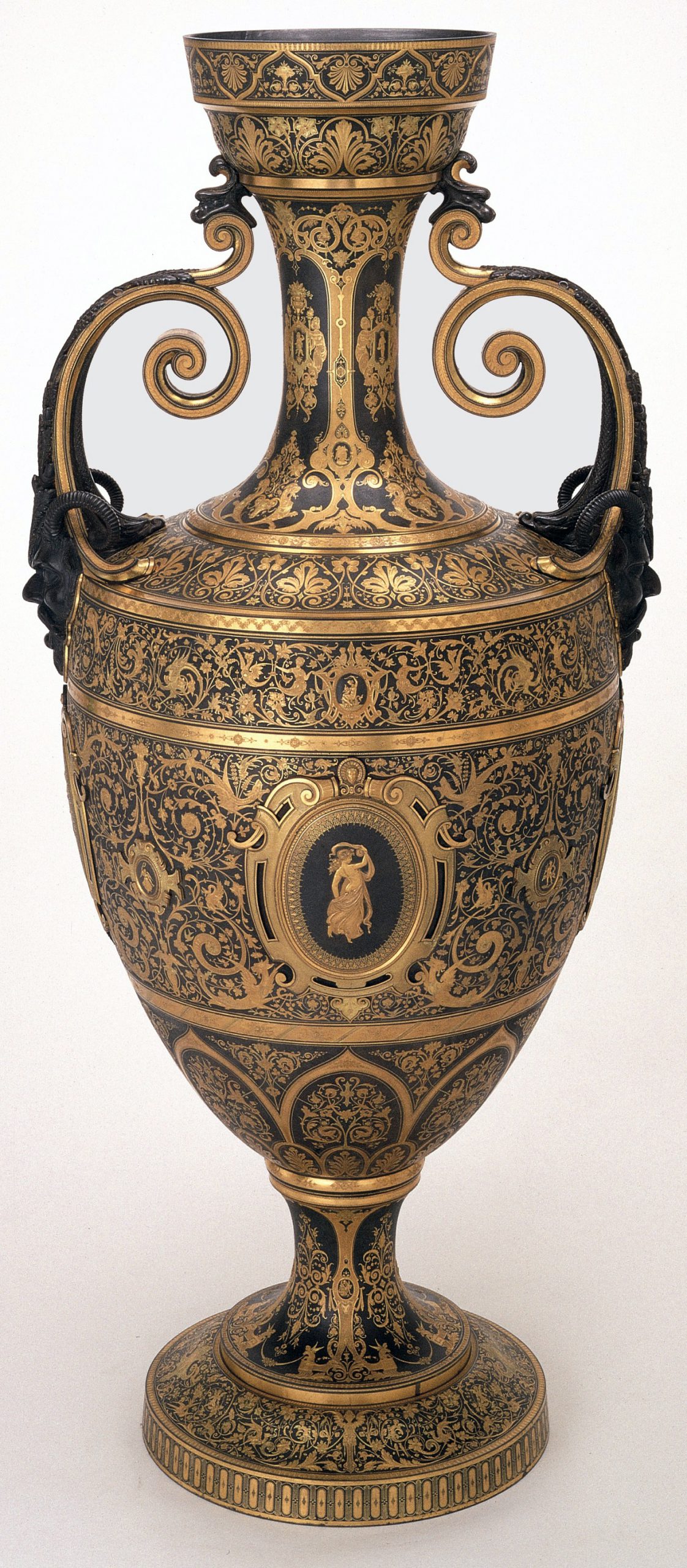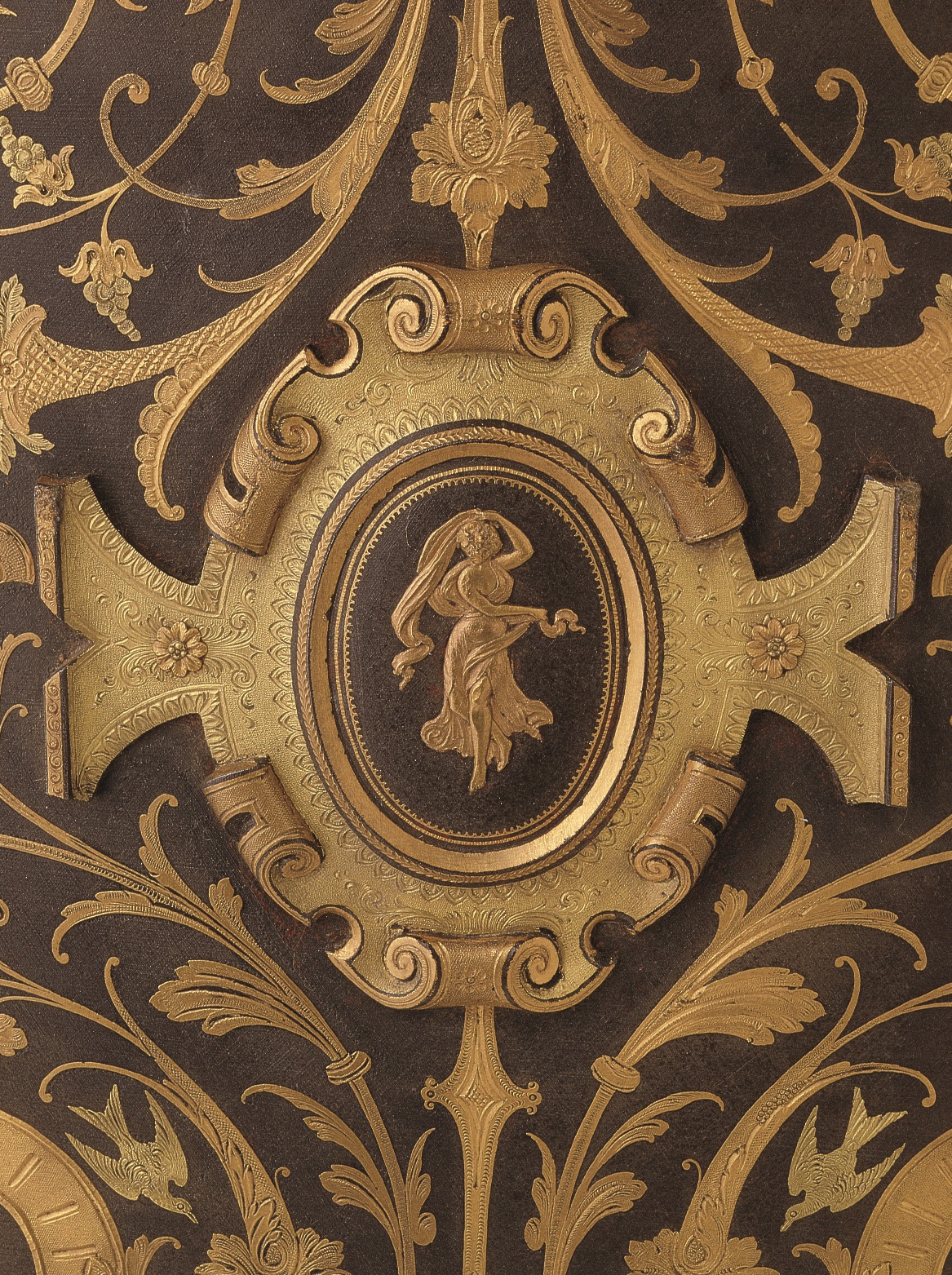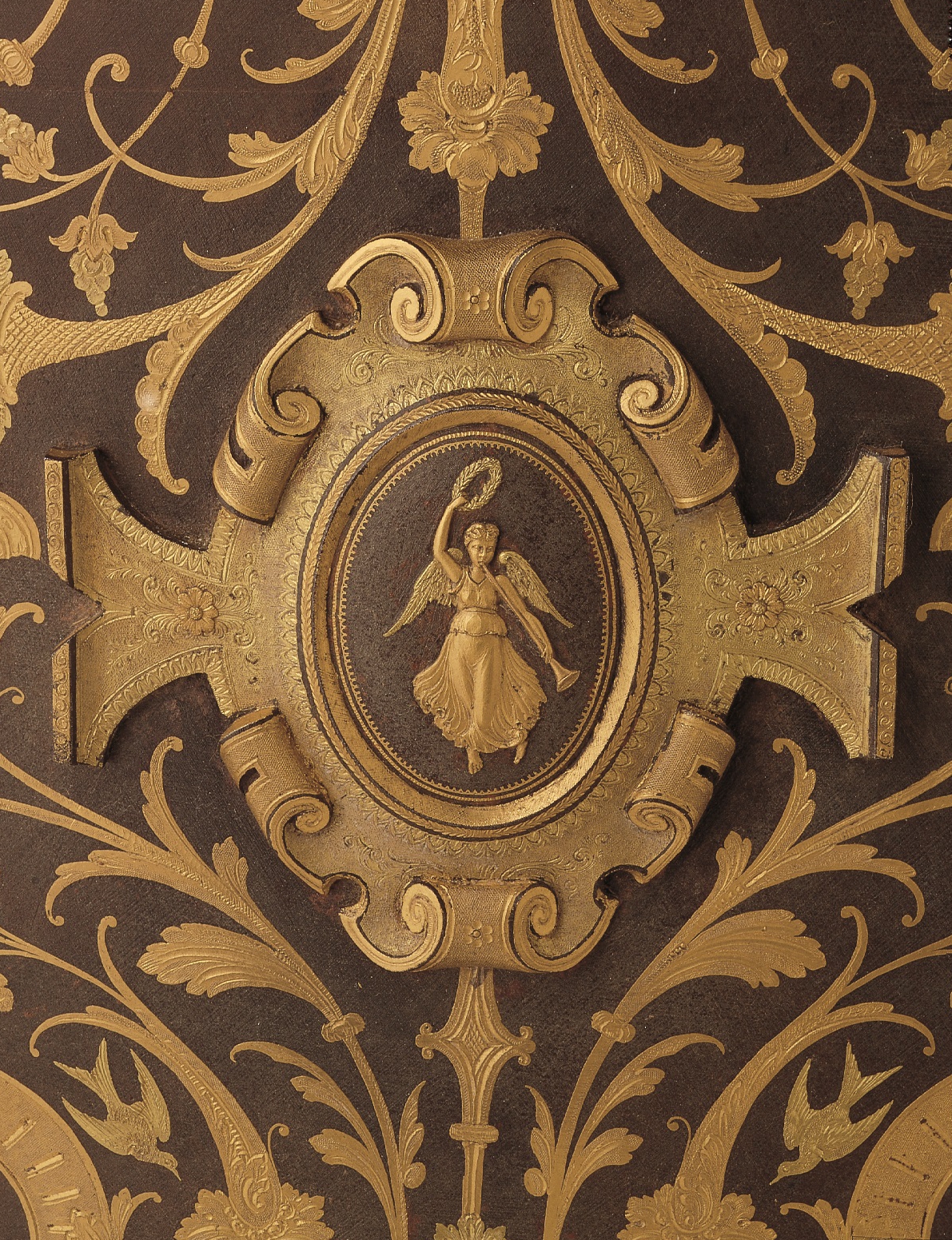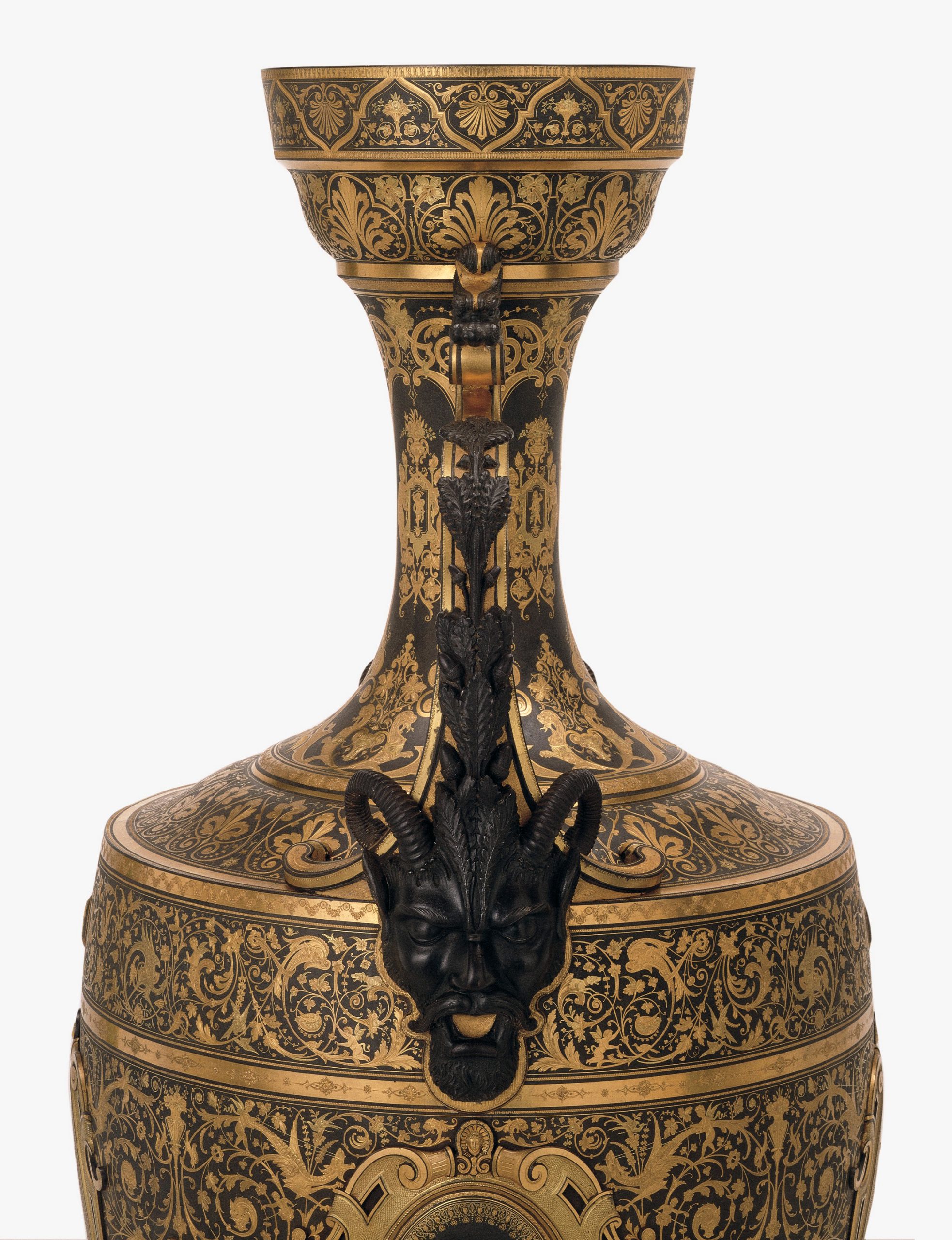 Print Page
Print Page
 Print Page
Print Page
Location: Spain, Eibar
Materials: iron, gold damascene
Dimensions: height 157 cm
Accession Number: ZUL 106
Other Notes:
This is a very large blackened iron vase of amphora shape having applied handles, foot, and eight relief medallions. At least three separate elements comprise the body. The upper ends of its two iron handles divide into recurved spirals. The handles are attached to the neck and body at both ends by chiselled and blackened horned masks. The iron neck and foot are divided vertically by ornate gold-damascened bands into panels containing damascened ornament. The body, lip and base of the foot are divided into horizontal bands of flat damascened ornament executed in wire; their design combines Renaissance and baroque figures and foliage of the type discussed in the commentary on ZUL 19, with classical and rococo elements. Four large and four small framed medallions of classical design, worked in low relief, are applied alternately in the large central band around the body of the vase.
This unusually tall iron vase presented the same problems in its construction as the urn ZUL 103, but those were more easily solved. Like ZUL 103, the present vase is composite, containing perhaps as many as a dozen separate elements. Several of these would have been brazed or silver-soldered together while semi-finished to form the body and neck. The neck with its lip and the foot could have been lathe-turned before attachment.
Because of the number of specialists involved in the vase's manufacture, its great size, and the excellence of its ornament, one may conjecture that it was a major commission coming from a workshop manned by some of the earlier disciples of Plácido. The layout of the design of the vase's body is familiar - horizontal bands, the central of which is interrupted by relief medallions – and has already been encountered on Plácido's pair of Morrison vases (ZUL 94). The same is true of the black grotesque heads applied at the juncture of the handles and the vase's body. The series of pointed arches in the lower band may be seen inverted and executed in silver in the upper band of decoration on Plácido’s vases. Finally, the gold lozenges containing small rosettes that decorate the vertical base of the vase's foot are very similar to an element frequently used by Plácido, tiny black four-pointed rosettes on a silver or gold ground. The same rosettes may be seen on the Morrison table at Buckingham Palace, the metre-high vases from the Carleton House Terrace dining room (see ZUL 104), and on the pair ZUL 94.
In contrast to the majority of Plácido's works, the damascening executed directly on the vase's surface is flat and worked in red and green gold wire. The applied relief medallions are probably the work of another artist specialized in this technique.
Several of the elements in the flat damascening have been taken directly from the 1889 Desprez album of watch-case patterns published in Geneva. The vase probably dates, at the earliest, from the very end of the nineteenth century.
Bibliography:
J. D. Lavin (ed.), The Art and Tradition of the Zuloagas: Spanish Damascene from the Khalili Collection, Oxford 1997, cat. 43, pp.147–51.



